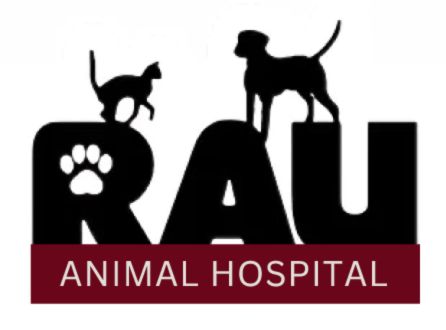
Proper pain management has become an important specialty area in veterinary medicine, just as it has in human medicine. There are as many different types of pain as different ways to treat it. At Rau Animal Hospital we take treating your pet’s pain very seriously and will work together with you to develop a pain management regime specifically tailored to your pet.
Chronic pain has traditionally been defined by its duration (pain that persists for weeks to months). If left untreated, chronic pain can lead to a variety of syndromes. In veterinary medicine, common causes of chronic pain include osteoarthritis, cancer pain, and neuropathic pain (commonly a result of procedures such as amputation of a digit, limb, or tail; “phantom limb” syndrome post-amputation; and chronic IVDD).
Every animal experiences pain in a unique way, so just because your dog or cat does not display a pain-related behavior, does not mean that he or she is not in pain. Some common indicators of pain in dogs and cats include decreased social interaction, reluctance to move, loss of appetite, aggression, and biting.
There are many ways Rau Animal Hospital can treat your pet’s chronic pain. The most important aspect of managing chronic pain is to work with a multi-modal treatment protocol. This means using medications combined with physical therapy to target several different steps of the pain pathway, allowing more effective pain control with fewer side effects.
Drug Therapies Include:
- Non-steroidal anti-inflammatory drugs (NSAIDs)
- NSAIDs remain the mainstay of therapy for chronically painful patients. They work mainly by blocking prostaglandin production by binding and inhibiting cyclooxygenase (COX). The result of this effect is mainly a reduction in inflammation.
- Opioids
- These drugs are useful in a variety of chronically painful conditions (though they may have limited effectiveness in some forms of neuropathic pain). Opioids may be particularly useful for chronic pain management, as they are available in oral and transdermal versions that are delivered through the skin.
- NMDA receptor antagonists
- This is a class of anesthetics often used as “adjunctive drugs” (meaning in combination with other analgesics) to improve the control of pain. Intense and/or chronic painful stimuli result in changes in the central nervous system, leading to an increase of pain intensity. NMDA receptor antagonist drugs help to control and treat this amplification.
- Gabapentin
- This drug has been used for many forms of chronic pain, though its best application may be for neuropathic pain. Gabapentin is commonly used in conjunction with opioids for the treatment of post-amputation patients.
- Tricyclic antidepressants (TCAs).
- Tricyclic antidepressants (TCAs) act to inhibit serotonin and norepinephrine reuptake, though they may have other analgesic effects as well.
Physical Therapies for Chronic Pain Management Include:
Acupuncture
Veterinary acupuncture stimulates the release of the body’s own pain-relieving and anti-inflammatory substances. Relaxation of muscles at the site of needle insertion and more distant locations body is achieved with veterinary acupuncture treatment, creating both a local and generalized pain-relieving effect. Veterinary acupuncture improves tissue blood flow, oxygenation, and the removal of metabolic wastes and toxins. Appointments can be scheduled with Dr. Wendy Zimmerman on Wednesday evenings.
Laser Therapy
If your pet has sustained an injury, undergone orthopedic surgery, or suffers from arthritis or other painful conditions, it may be a candidate for low-level laser therapy. The low-level laser not only speeds the healing process but also affects the overall quality of the repaired tissue.
